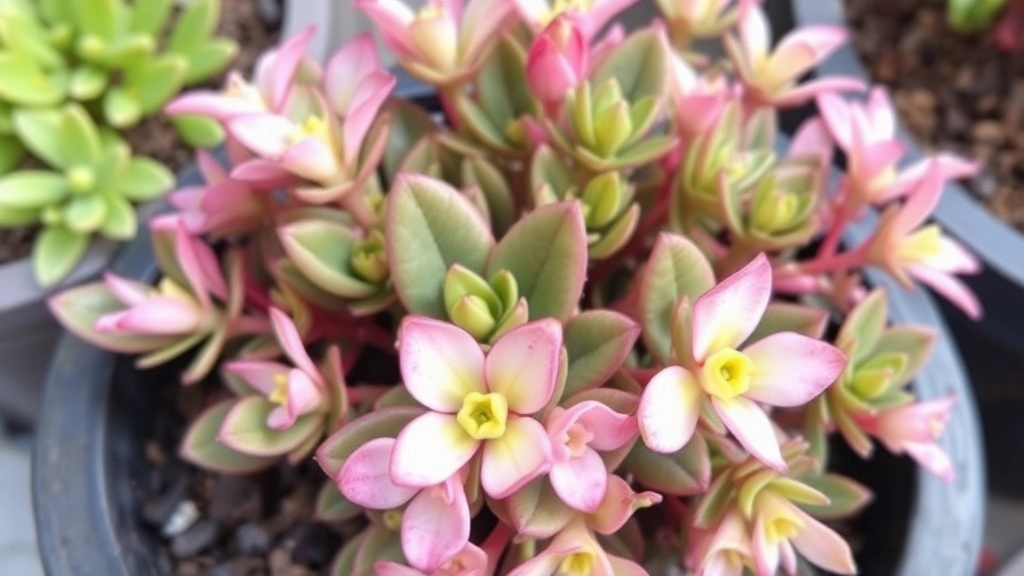Growing Kalanchoe Pinnata
Looking to plant Kalanchoe Pinnata, also known as Cathedral Bells or Miracle Plant? You’re in the right place. This versatile succulent is not only an eye-catcher but also has a rich history in traditional medicine. Let’s dive into the essentials of growing and caring for this unique plant to ensure it thrives in your garden or home.
Optimal Growing Conditions
First, understanding the optimal growing conditions is key. Kalanchoe Pinnata prefers bright, indirect sunlight and well-draining soil. Overwatering can lead to root rot, so it’s crucial to let the soil dry out between waterings. When it comes to fertilizing, less is more—over-fertilization can harm your plant. Keep these basic tips in mind, and you’ll be well on your way to enjoying a healthy and beautiful Kalanchoe Pinnata.
Optimal Growing Conditions for Kalanchoe Pinnata
When considering how to cultivate Kalanchoe Pinnata, understanding its optimal growing conditions is essential for success.
What Makes Kalanchoe Pinnata Thrive?
Kalanchoe Pinnata, also known as the “Air Plant” or “Mother of Thousands,” flourishes in specific environments. Here are the key factors to ensure your plant thrives:
- Light: Bright, indirect sunlight is ideal. Too much direct sun can scorch the leaves, while too little can hinder growth. For more tips, check out our lighting and care tips.
- Soil: A well-draining soil mix is crucial. A cactus or succulent blend works wonders, allowing for proper drainage. Learn more about the best soil for Kalanchoe.
- Watering: This plant prefers to dry out between waterings. Overwatering can lead to root rot, so it’s essential to let the soil dry completely.
- Temperature: Kalanchoe Pinnata enjoys warm temperatures, ideally between 20°C and 30°C. It can tolerate cooler temperatures but should be protected from frost.
- Humidity: Moderate humidity levels are best. While it can adapt to lower humidity, excessively dry conditions may stress the plant.
II. Light Requirements: How Much Sunlight Is Needed?
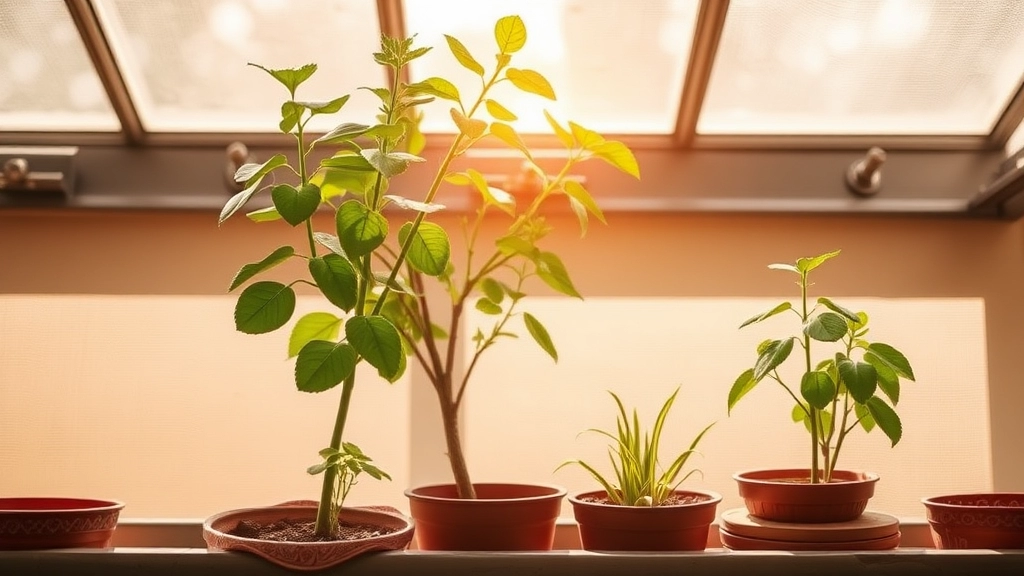
So, you’ve got your Kalanchoe Pinnata, and now you’re wondering about its light needs.
How much sunlight does it really need?
This succulent thrives in bright, indirect sunlight.
Here’s the lowdown:
- Ideal Light: Aim for 6 hours of bright light each day.
- Direct Sunlight: While it can handle some direct sun, especially in the morning, too much can scorch those lovely leaves.
- Indoor vs. Outdoor: If you’re growing it indoors, a south or west-facing window is your best bet. Outdoors, a spot with dappled sunlight works wonders.
Signs of Too Much or Too Little Light:
- Too Much Light: Leaves may turn brown or crispy.
- Too Little Light: The plant might stretch or become leggy, reaching for that sunlight.
Remember, it’s all about balance.
With the right light, your Kalanchoe Pinnata will flourish, setting the stage for healthy growth.
Best Soil Mix for Healthy Growth
When it comes to nurturing Kalanchoe Pinnata, the right soil mix is crucial for its overall health and vitality. You might be wondering, “What kind of soil does my Kalanchoe need to thrive?”
Ideal Soil Composition
Kalanchoe Pinnata prefers a well-draining soil mix that mimics its natural habitat. Here’s what you should consider:
- Cactus or Succulent Mix: These pre-made mixes provide excellent drainage and are often enriched with the right nutrients.
- DIY Soil Mix: If you prefer to create your own, combine:
- 50% potting soil
- 25% perlite or pumice
- 25% coarse sand
This combination ensures that excess water can easily escape, preventing root rot.
Key Characteristics of the Soil
- pH Level: Aim for a slightly acidic to neutral pH (around 6.0 to 7.0). This range supports nutrient uptake.
- Aeration: The mix should allow air to reach the roots, promoting healthy growth.
Drainage is Essential
Proper drainage is non-negotiable. Here are a few tips to ensure your Kalanchoe Pinnata stays happy:
- Use pots with drainage holes: This prevents water from pooling at the bottom.
- Add a layer of gravel or stones: Placing this at the bottom of the pot enhances drainage.
Signs of Poor Soil Conditions
If your Kalanchoe is struggling, it might be due to soil issues. Look for:
- Yellowing leaves
- Wilting despite adequate watering
- Root rot (black, mushy roots)
By keeping an eye out for these signs, you can adjust your soil mix as needed.
Next Steps: Proper Watering Techniques to Prevent Root Rot
Once you’ve mastered the soil mix, it’s crucial to understand the proper watering techniques to prevent root rot. Additionally, ensuring the best soil for Kalanchoe Blossfeldiana will further enhance the health and growth of your plant.
Proper Watering Techniques to Prevent Root Rot
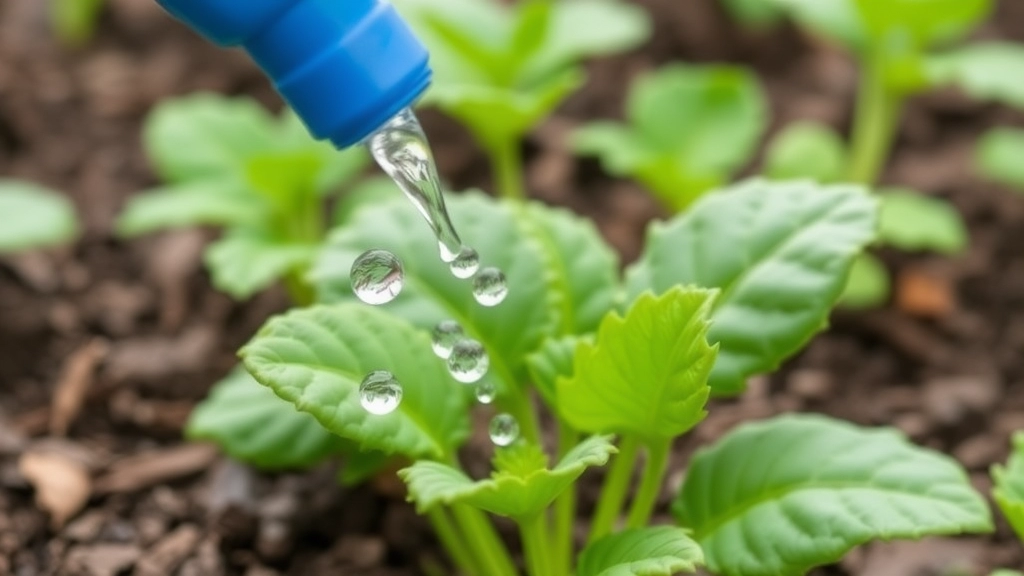
As we delve deeper into caring for Kalanchoe Pinnata, it’s crucial to address one of the most common concerns: proper watering techniques. Overwatering is a frequent pitfall that can lead to root rot, a serious issue for this resilient plant.
Understanding Watering Needs
Kalanchoe Pinnata thrives in well-draining conditions, making it essential to balance moisture without drowning the roots. Here’s how to achieve that:
- Check the Soil Moisture: Before watering, stick your finger about an inch into the soil. If it feels dry, it’s time to water. If it’s still moist, hold off.
- Water Thoroughly: When you do water, ensure it’s a deep soak. This encourages the roots to grow downwards, promoting a healthier plant.
- Use a Pot with Drainage Holes: Make sure your pot has adequate drainage to allow excess water to escape. This is vital in preventing water from sitting at the bottom.
- Seasonal Adjustments: During the growing season (spring and summer), Kalanchoe Pinnata may require more frequent watering. In contrast, reduce watering in the dormant months (autumn and winter).
Signs of Overwatering
It’s essential to be vigilant for signs that you may be overwatering:
- Yellowing leaves
- Wilting despite moist soil
- Mushy roots upon inspection
If you notice these symptoms, it may be time to adjust your watering routine.
Tips for Effective Watering
- Water in the Morning: This helps the plant absorb moisture before the heat of the day.
- Use Room Temperature Water: Cold water can shock the plant’s system.
- Consider Humidity: If your home is particularly humid, you may need to water less frequently.
By mastering these watering techniques, you can significantly reduce the risk of root rot and keep your Kalanchoe Pinnata flourishing.
Fertilizing Kalanchoe Pinnata: Do’s and Don’ts
When it comes to nurturing your Kalanchoe Pinnata, the right fertilization can make all the difference in its health and vitality. You might be wondering, how do I ensure my plant gets the nutrients it needs without overdoing it?
Do’s
- Use a Balanced Fertilizer: Opt for a balanced, water-soluble fertilizer with an N-P-K ratio of 10-10-10 or similar. This ensures your plant receives equal parts nitrogen, phosphorus, and potassium.
- Dilute Your Fertilizer: Always dilute the fertilizer to half the recommended strength. Kalanchoe Pinnata is sensitive to strong nutrients, and less is often more.
- Fertilize During Growing Season: Apply fertilizer during the spring and summer months when your plant is actively growing. This is the time it benefits most from additional nutrients.
- Frequency: Fertilize every 4-6 weeks during the growing season. This helps maintain nutrient levels without overwhelming the plant.
Don’ts
- Avoid Over-fertilization: Too much fertilizer can lead to salt build-up in the soil, causing root burn. Always err on the side of caution.
- Skip Fertilizing in Winter: During the dormant winter months, your Kalanchoe Pinnata doesn’t need extra nutrients. Hold off on fertilizing until spring.
- Neglect Soil Quality: Fertilizing poor-quality soil won’t yield results. Always ensure your soil mix is well-draining and nutrient-rich. For more insights, check out the best soil for Kalanchoe Blossfeldiana care tips.
- Use High-Nitrogen Fertilizers: Excess nitrogen can lead to lush foliage but poor flowering. Stick to balanced options for optimal health. For additional guidance, you might find the optimal care for Kalanchoe Blossfeldiana growth useful.
Temperature and Humidity Preferences

So, you’ve got your Kalanchoe Pinnata thriving, but are you keeping an eye on the temperature and humidity?
These little beauties are pretty adaptable, but they do have their sweet spots.
Ideal Temperature
- Daytime: Aim for around 20-25°C (68-77°F).
- Nighttime: A drop to 15-18°C (59-65°F) is just fine.
They can handle a bit of fluctuation, but anything below 10°C (50°F) can stress them out.
Humidity Levels
- Kalanchoe Pinnata prefers moderate humidity.
- Ideally, keep it around 40-60%.
Too much humidity can lead to rot, while too little can cause the leaves to shrivel.
Tips for Maintaining Conditions
- Indoor Growing: Keep them near a window but away from cold drafts.
- Outdoor Growing: If you’re in a cooler climate, consider bringing them indoors during winter.
- Using a Humidifier: If your home is dry, a humidifier can help maintain that sweet spot.
VII. Pruning and Grooming Tips for Healthier Kalanchoe Pinnata
After ensuring your Kalanchoe Pinnata receives the right light, soil, and water, it’s time to consider how pruning can enhance its health and appearance.
Why Prune?
Pruning is essential for maintaining the vitality of your Kalanchoe Pinnata. It helps:
- Promote bushier growth
- Remove dead or damaged leaves
- Encourage flowering
- Prevent overcrowding
When to Prune
- Timing: The best time to prune is in early spring, just before the growing season begins. This allows your plant to recover and thrive.
How to Prune
- Gather Your Tools: Use clean, sharp scissors or pruning shears.
- Identify Problem Areas: Look for:
- Dead or yellowing leaves
- Leggy growth
- Overcrowded stems
- Make Clean Cuts:
- Cut just above a leaf node to encourage new growth.
- Remove any flowers that have wilted to redirect energy to healthy parts of the plant.
- Regular Maintenance:
- Aim to prune every few months to keep your plant looking its best.
- Regularly check for pests or diseases as you groom.
Grooming Tips
- Dust Leaves: Wipe leaves with a damp cloth to keep them clean and enhance photosynthesis.
- Repotting: Consider repotting every couple of years to refresh the soil and provide more space for growth.
Signs Your Plant Needs Pruning
- Sparse foliage
- Unruly growth
- Reduced flowering
By incorporating these pruning and grooming practices, you can ensure your Kalanchoe Pinnata remains healthy and vibrant. For more detailed information, you might find our Optimal Care for Kalanchoe Blossfeldiana Growth guide helpful. Additionally, if you’re dealing with specific issues like yellowing leaves, check out our Yellow Kalanchoe Blossfeldiana Care Guide for targeted advice.
How to Propagate Kalanchoe Pinnata from Cuttings
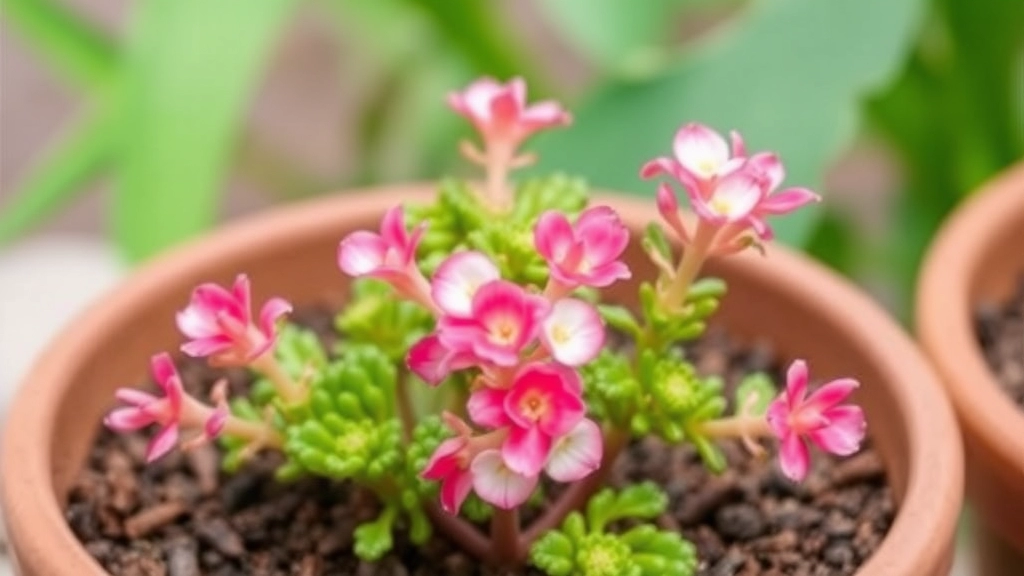
So, you’ve got your Kalanchoe Pinnata thriving and you’re thinking, “How can I get more of these beauties?”
Great question! Propagating Kalanchoe Pinnata from cuttings is super easy and a rewarding way to expand your collection.
Step-by-Step Guide to Propagation
- Choose the Right Cutting
- Look for a healthy stem that’s about 4-6 inches long.
- Make sure it has a few leaves—these will help it grow.
- Cut It Right
- Use clean, sharp scissors or a knife to make a clean cut.
- Cut just below a leaf node for the best chance of rooting.
- Let It Callus
- Place the cutting in a dry spot for a day or two.
- This helps the cut end to callus over, reducing the risk of rot.
- Prepare the Soil
- Use a well-draining soil mix—think cactus or succulent soil.
- You can also mix regular potting soil with sand or perlite.
- Plant the Cutting
- Dip the cut end in rooting hormone (optional but helpful).
- Plant it in the soil, burying about an inch.
- Water Sparingly
- Give it a light watering, just enough to moisten the soil.
- Avoid overwatering; this is key to preventing root rot.
- Create a Humid Environment
- Cover the pot with a plastic bag or a clear plastic dome.
- This helps keep moisture in while the cutting establishes roots.
- Provide Indirect Light
- Place the pot in a spot with bright, indirect sunlight.
- Avoid direct sunlight until the cutting roots.
- Watch for Growth
- In a few weeks, you should see new growth.
- Once it’s established, you can treat it like a mature plant.
Tips for Success
- Be Patient: Not all cuttings will root, so don’t be discouraged if some don’t make it.
- Keep It Clean: Always use clean tools to avoid introducing pests or diseases.
- Experiment: Try different lengths and types of cuttings to see what works best for you.
Managing Common Pests and Diseases
When caring for Kalanchoe Pinnata, one of the key concerns is managing pests and diseases that can affect its health.
Common Pests to Watch For
Kalanchoe Pinnata can attract various pests. Here are the most common ones:
- Aphids: Tiny green or black insects that suck sap from the leaves.
- Mealybugs: White, cotton-like pests that often hide in leaf axils.
- Spider Mites: Tiny, spider-like pests that thrive in dry conditions and create fine webbing.
- Scale Insects: Small, shell-like pests that attach themselves to the stems and leaves.
Signs of Infestation
Keep an eye out for these signs:
- Yellowing or curling leaves
- Sticky residue on leaves (honeydew from aphids)
- Visible webs (spider mites)
- White, cottony masses (mealybugs)
Effective Control Methods
Managing these pests can be straightforward. Here are some effective strategies:
- Manual Removal: For small infestations, wipe leaves with a damp cloth or use a soft brush.
- Insecticidal Soap: Spray affected areas with insecticidal soap to eliminate pests without harming the plant.
- Neem Oil: A natural pesticide that can deter a variety of pests.
- Regular Inspections: Check your plants regularly to catch infestations early.
Diseases to Consider
Kalanchoe Pinnata can also suffer from diseases, primarily due to overwatering or poor air circulation.
- Root Rot: Caused by excessive moisture; ensure proper drainage and watering practices.
- Leaf Spot: A fungal infection that appears as brown spots on leaves; improve air circulation and avoid wetting foliage.
Prevention Tips
To maintain a healthy Kalanchoe Pinnata and prevent pests and diseases, consider these simple tips:
- Proper Watering: Allow the soil to dry between waterings to prevent root rot. For more detailed advice, check out our Optimal Care for Kalanchoe Blossfeldiana Growth guide.
- Good Air Circulation: Ensure your plant has space to breathe; avoid overcrowding. You can also learn about Fixing Etiolated Kalanchoe Blossfeldiana for better plant health.
- Quarantine New Plants: Keep new additions separate for a few weeks to monitor for pests.
Medicinal Uses and Traditional Remedies of Kalanchoe Pinnata
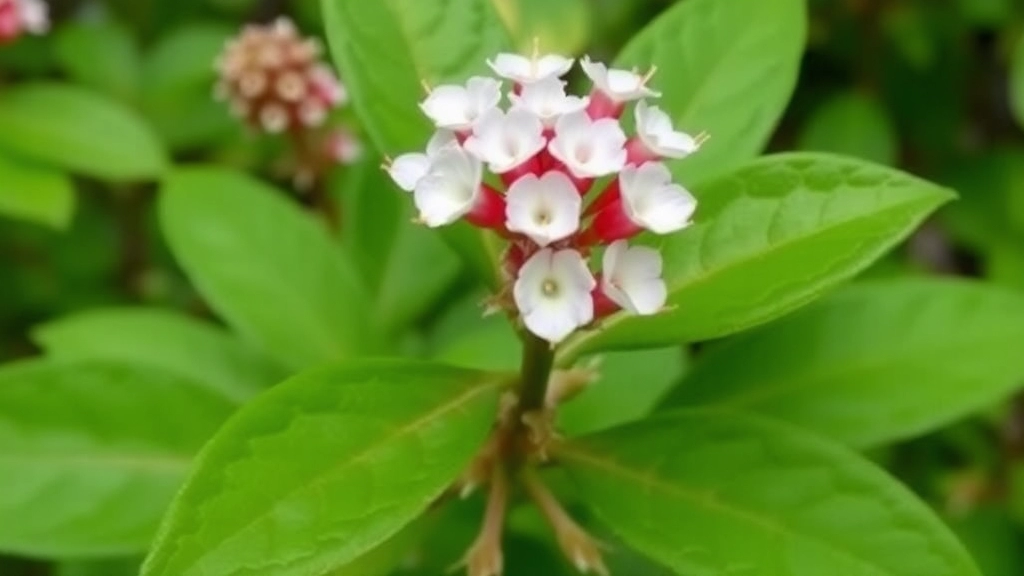
Have you ever wondered if your houseplants could do more than just look pretty?
Kalanchoe pinnata, often called the “Miracle Leaf,” is not just a charming succulent; it’s packed with medicinal benefits that have been used for generations.
Traditional Uses
This plant has a rich history in folk medicine, particularly in regions like Africa and Asia. Here are some of its traditional uses:
- Wound Healing: Kalanchoe pinnata leaves are often crushed and applied directly to cuts and bruises. The sap is believed to speed up healing and reduce inflammation.
- Respiratory Relief: Many people use the leaves to prepare teas that may help relieve coughs and respiratory issues.
- Anti-inflammatory Properties: The plant is thought to help with conditions like arthritis and general inflammation when applied topically.
How to Use Kalanchoe Pinnata
If you’re keen to try out its benefits, here’s how you can use it safely:
- Topical Application: Crush fresh leaves to extract the juice, then apply it to the affected area for cuts or bruises.
- Herbal Tea: Boil the leaves in water, strain, and sip. This may help soothe your throat and ease coughs.
- Poultice: Make a paste of the leaves and apply it to inflamed areas for relief.
Remember, while Kalanchoe pinnata has many traditional uses, it’s always wise to consult with a healthcare professional before diving in.
Caution
It’s important to note that not everyone may react the same way to this plant. Some people might experience allergic reactions or stomach upset. Always do a patch test before applying it to your skin, and start with small amounts if you’re trying it internally.
Invasiveness and How to Grow Responsibly
As we explore the fascinating world of Kalanchoe Pinnata, it’s crucial to address an important concern: its potential invasiveness. Many plant enthusiasts may wonder how to enjoy this beautiful succulent without contributing to ecological issues.
Understanding Invasiveness
Kalanchoe Pinnata is known for its vigorous growth and ability to thrive in various environments. However, this resilience can lead to it becoming invasive in certain regions. Here are some key points to consider:
- Rapid Growth: This plant can spread quickly, often outcompeting local flora.
- Seed Production: Kalanchoe Pinnata produces numerous seeds that can easily disperse, leading to unwanted growth in gardens and natural habitats.
- Environmental Impact: Invasive species can disrupt local ecosystems, affecting native plants and wildlife.
Growing Responsibly
To enjoy Kalanchoe Pinnata while minimising its environmental impact, consider the following responsible growing practices:
- Containment: Use pots or raised beds to limit its spread. This keeps the plant in check and prevents it from taking over your garden.
- Regular Monitoring: Keep an eye on its growth. Remove any unwanted seedlings promptly to prevent them from establishing.
- Educate Others: Share your knowledge about responsible growing practices with fellow gardeners to promote awareness.
For more detailed information on how to manage and care for different varieties of Kalanchoe, check out our Kalanchoe Blossfeldiana Care Guide. Additionally, if you’re interested in learning about the best practices for growing Kalanchoe from seeds, visit our comprehensive guide on How to Grow Kalanchoe Blossfeldiana from Seeds.
By adopting these strategies, you can enjoy Kalanchoe Pinnata while contributing to the health of your local ecosystem.
FAQs About Plant Kalanchoe Pinnata
How much sunlight does Kalanchoe Pinnata need?
Kalanchoe Pinnata thrives in bright, indirect sunlight. Aim for 6 hours of bright light each day. It can handle some direct sun, especially in the morning, but too much can scorch the leaves.
What are the signs of too much or too little light for Kalanchoe Pinnata?
If your plant is getting too much light, the leaves may turn brown or crispy. If it’s getting too little light, it might stretch or become leggy as it reaches for sunlight.
How should I water Kalanchoe Pinnata to prevent root rot?
Before watering, check the soil moisture by sticking your finger about an inch into the soil. If it feels dry, it’s time to water. When you do water, ensure it’s a deep soak. Use a pot with drainage holes and adjust watering frequency based on the season.
What are the signs of overwatering Kalanchoe Pinnata?
Signs of overwatering include yellowing leaves, wilting despite moist soil, and mushy roots upon inspection.
What are the ideal temperature and humidity levels for Kalanchoe Pinnata?
For daytime, aim for around 20-25°C (68-77°F), and for nighttime, a drop to 15-18°C (59-65°F) is fine. Kalanchoe Pinnata prefers moderate humidity, ideally around 40-60%.
How can I propagate Kalanchoe Pinnata from cuttings?
Choose a healthy stem about 4-6 inches long, make a clean cut below a leaf node, let it callus for a day or two, and then plant it in well-draining soil. Water sparingly and keep the cutting in bright, indirect sunlight until it roots.
What are the medicinal uses of Kalanchoe Pinnata?
Kalanchoe Pinnata has been traditionally used for wound healing, respiratory relief, and its anti-inflammatory properties. Always consult a healthcare professional before using it for medicinal purposes.
How can I use Kalanchoe Pinnata for its medicinal benefits?
You can crush fresh leaves to extract the juice for topical application on cuts or bruises, prepare herbal tea by boiling the leaves in water, or make a poultice to apply to inflamed areas.
Are there any precautions to take when using Kalanchoe Pinnata medicinally?
Yes, some people might experience allergic reactions or stomach upset. Always do a patch test before applying it to your skin, and start with small amounts if you’re trying it internally.
References
-
How to Grow and Care for Kalanchoe Pinnata
-
Growing Kalanchoe Pinnata Plants
-
Medicinal Uses of Kalanchoe Pinnata: A Review
